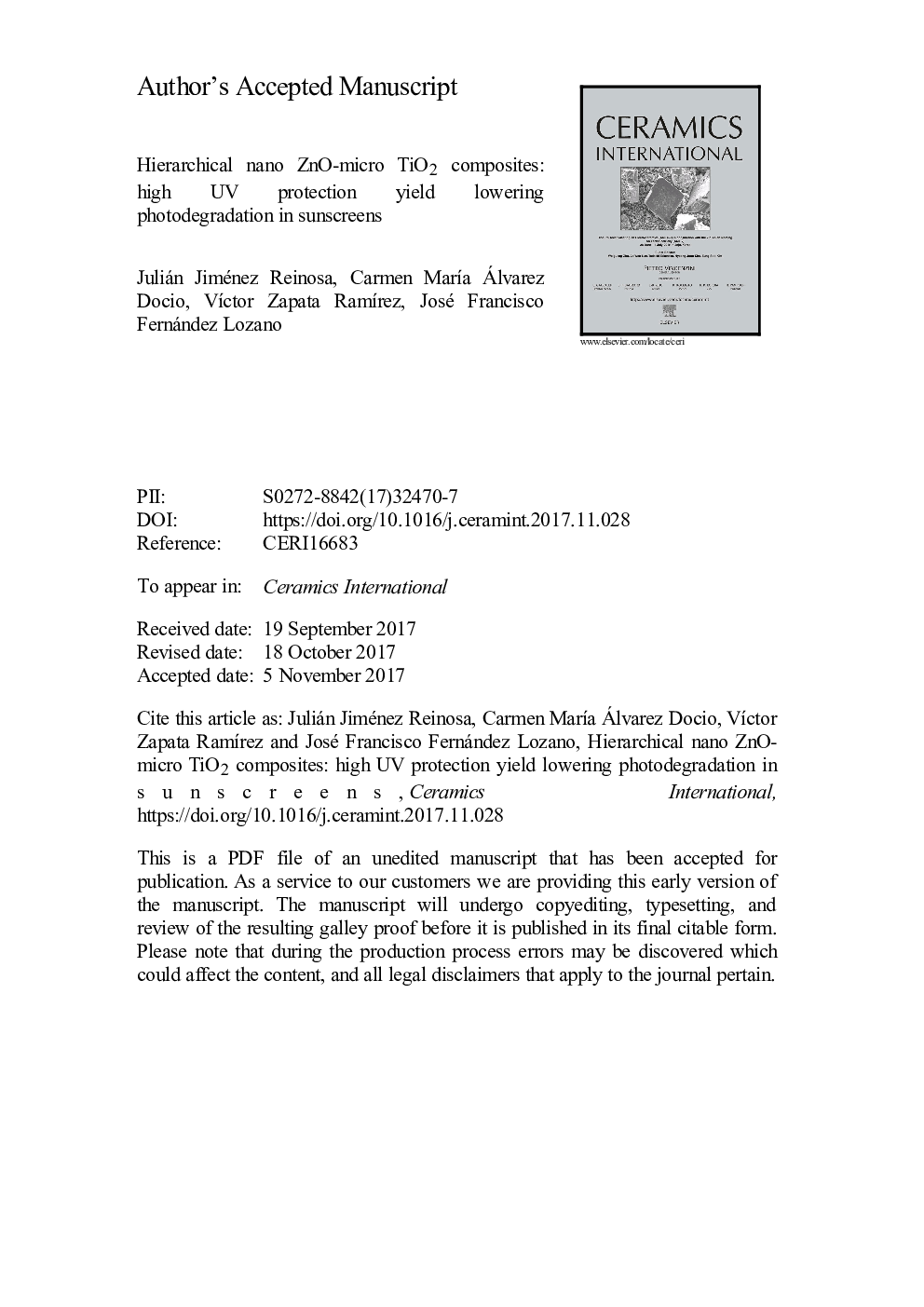| Article ID | Journal | Published Year | Pages | File Type |
|---|---|---|---|---|
| 7888533 | Ceramics International | 2018 | 29 Pages |
Abstract
TiO2 is a commonly used semiconductor photocatalyst but, as a paradox, it is also widely used as UV filter in sunscreens. Moreover, its capacity to form free radicals under UV irradiation generates reactive free radicals that provoke sunscreens degradation. In this work a hierarchical composite made of ZnO nanoparticles anchored onto TiO2 microparticles is developed in a safe-by-design way by using the sol-gel method. The aim of this composite is to gain the advantages of inorganic nanoparticles avoiding their potential drawbacks. The hierarchical composite presents higher UV absorption than the pure TiO2 or ZnO counterparts. The functional stability study on standard sunscreen reveals a 50% high Solar Protection Factor (SPF) values over time for the hierarchical composite lowering the photodegradation of the formulation. Under authors' knowledge, it is the first time that the combination of these oxides increases the UV attenuation as inhibits the negative effects of free radicals. The high UV absorption without degradation opens a new orientation for the effective use of UV-absorbers without the photocatalyst adverse effects. The results in sunscreens generate a proposed mechanism of functionality that explains the observed differences on the efficiency of photocatalytic activity of these materials for other application fields.
Keywords
Related Topics
Physical Sciences and Engineering
Materials Science
Ceramics and Composites
Authors
Julián Jiménez Reinosa, Carmen MarÃa Álvarez Docio, VÃctor Zapata RamÃrez, José Francisco Fernández Lozano,
